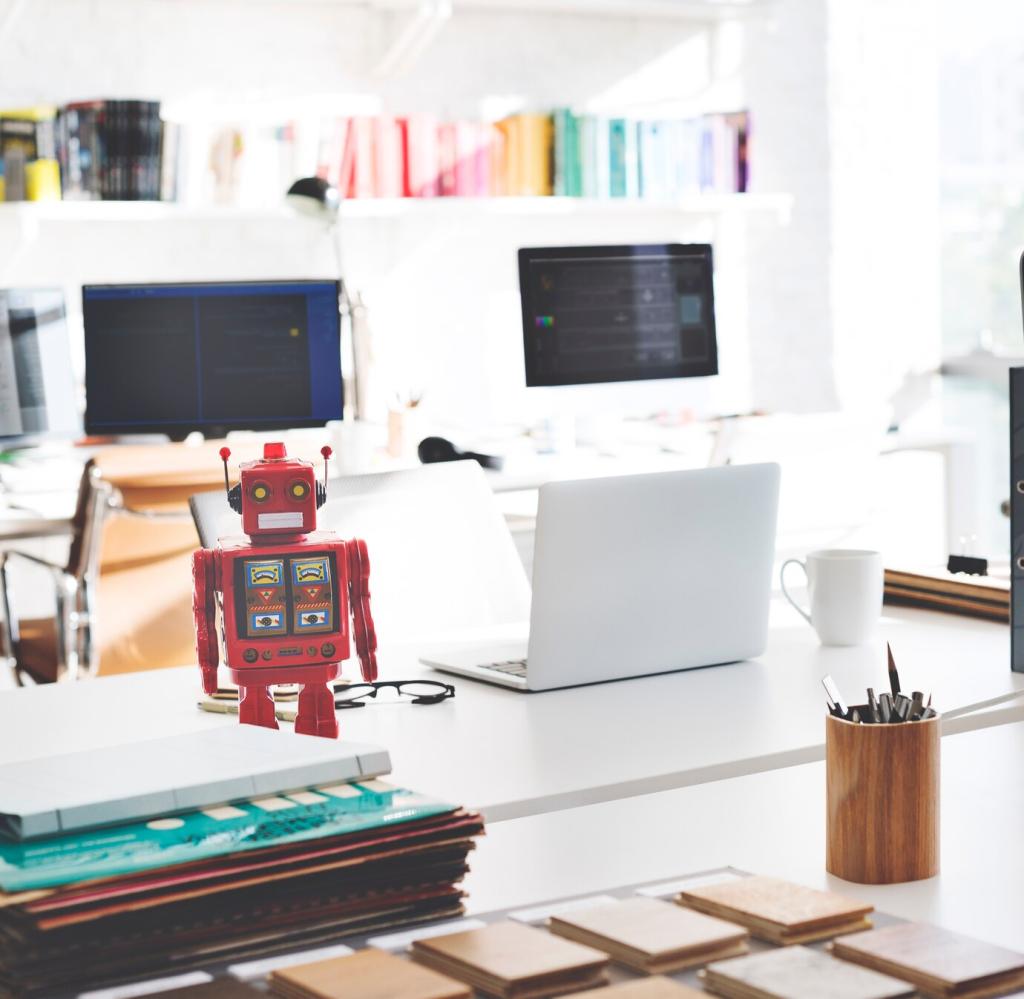Leveraging AI for Boosting Productivity in Remote Teams
Artificial Intelligence (AI) has swiftly become a transformative force in how modern remote teams collaborate, communicate, and achieve their objectives. By seamlessly integrating machine learning algorithms, data analytics, and intelligent automation, organizations can empower distributed workforces to operate with heightened efficiency and focus. This web page explores the multifaceted ways in which AI technologies can revolutionize productivity within remote teams, ensuring consistent performance and fostering a culture of innovation and collaboration.
Streamlining Communication Across Distances
01
Smart Email Management
AI-powered email platforms can analyze the urgency and importance of incoming messages, prioritize responses, and even draft replies using natural language processing. For remote teams juggling hundreds of emails daily, these innovations help eliminate information overload, ensure critical messages are not overlooked, and free up time for more strategic work. By learning user preferences and recognizing communication patterns, AI makes inboxes more manageable and responsive to shifting project demands.
02
Real-Time Translation and Transcription
With remote teams often comprising members from diverse linguistic backgrounds, AI-powered translation and transcription services enable seamless cross-cultural communication. Real-time translation allows participants to communicate naturally in their own language, while automatic transcriptions ensure meetings and collaborative sessions are accurately documented. This not only preserves valuable intellectual assets but also enhances inclusivity, empowering every team member to contribute confidently.
03
Virtual Meeting Optimization
AI can evaluate aspects of virtual meetings—such as participation levels, agenda adherence, and conversation dynamics—to offer practical recommendations for future improvements. By automatically generating summaries and assigning action items, AI helps teams stay aligned and accountable. These features reduce time spent on administrative follow-up and ensure meetings are productive and goal-oriented, rather than being repetitive or unfocused.
AI-driven analytics evaluate each team member’s workload in real time and automatically redistribute tasks to ensure optimal efficiency and engagement. These systems account for skill levels, recent productivity trends, and personal schedules, making adjustments as project demands shift. This ensures workloads remain balanced and deadlines are respected, fostering a more sustainable and motivated workforce.
Enhancing Task Management and Prioritization

Automated Scheduling Assistance
Coordinating meetings across multiple time zones can be complex and time-consuming for remote teams. AI-powered scheduling assistants analyze calendars, preferences, and availability, proposing optimal meeting times automatically. These virtual assistants also manage rescheduling, send reminders, and even anticipate potential scheduling conflicts, minimizing manual effort and maximizing time spent on productive collaboration.

Intelligent Data Entry and Processing
AI systems can rapidly process vast quantities of data, extracting relevant information and inputting it into databases or project management tools. This capability is particularly valuable for teams managing multiple streams of information or handling large volumes of repetitive documentation. By automating these processes, errors are reduced, and employees regain valuable hours to dedicate to higher-level thinking and innovation.
AI can assess employee skills, identify gaps, and suggest personalized learning tracks that align with both role requirements and career aspirations. These platforms curate relevant courses, training modules, and tutorials, adapting recommendations as team members progress. Remote workers benefit from a clear development roadmap, increasing engagement and accelerating skill acquisition to meet evolving business needs.


Smarter Document Search and Retrieval
When remote teams rely heavily on digital documentation, finding the right information quickly is crucial. AI-driven search engines can index and understand vast stores of files, emails, and notes, surfacing contextually relevant documents within seconds. Teams spend less time searching for resources and more time taking decisive action, thereby maintaining workflow momentum and reducing frustration.

Contextual Knowledge Recommendations
Based on individual roles, current projects, and ongoing conversations, AI systems suggest additional reading materials, best practices, or subject-matter experts from within the organization. These recommendations help remote teams make informed decisions and avoid reinventing the wheel, boosting efficiency through the strategic reuse of organizational intelligence. This constant flow of tailored insights supports smarter and faster decision-making.

AI-Powered Brainstorming Support
Group ideation can be challenging when team members are scattered globally. AI tools facilitate virtual brainstorming sessions by organizing ideas, recognizing themes, and suggesting potential solutions based on previous successful initiatives. These systems can even introduce external data or creative prompts, energizing meetings and ensuring a diversity of perspectives are considered in problem-solving.
Increasing Focus through Intelligent Prioritization
Personalized Workday Structuring
AI tools learn from user interactions, calendars, and productivity rhythms to recommend optimal daily routines and time blocks for focused work versus collaborative activities. Remote workers receive prompts when it’s time to concentrate on key projects, take breaks, or switch contexts for maximum effectiveness. This intelligent structuring helps maintain energy, reduce fatigue, and ensure that high-value tasks receive appropriate attention.
Context-Aware Notification Management
Constant notifications from various collaboration platforms can be overwhelming. Context-aware AI systems filter and time these alerts based on importance and user working patterns, reducing interruptions during periods of deep focus. By only surfacing the most relevant communications at the right moments, remote employees can concentrate better, resulting in higher-quality output and improved job satisfaction.
Critical Task Highlighting
AI algorithms evaluate ongoing assignments, due dates, and strategic priorities to highlight the tasks that will make the greatest impact on individual and team goals. Subtle visual cues or reminders within productivity platforms keep key actions top of mind, preventing important deliverables from slipping through the cracks. This laser-focused approach ensures remote teams continuously make progress on what matters most.
Unlocking Data-Driven Decision Making
01
AI systems aggregate and interpret project data to predict potential risks, delays, or performance dips before they become critical issues. Teams and managers receive early warnings and suggested corrective actions, fostering a proactive, rather than reactive, approach to remote team management. This predictability builds confidence and mitigates uncertainty in remote operations.
02
Goal tracking platforms powered by AI can monitor progress and automatically recalibrate objectives based on shifting business contexts or team achievements. These systems encourage consistent alignment and agility, allowing remote teams to focus on priorities that will yield the highest returns. Transparent goal adaptation builds trust and encourages continuous improvement within the team.
03
Effectively distributing resources is essential for remote project success. AI platforms assess historical data, current workloads, and shifting priorities to recommend where additional support, budget, or time should be allocated. This intelligent analysis prevents overextension of resources and maximizes the team’s ability to deliver strong results, even as situations evolve rapidly.
Real-Time Threat Detection
AI-driven security platforms continuously monitor digital workflows, recognizing unusual activity patterns that may signal a threat. Rapid alerts and automatic intervention measures can thwart phishing attacks, malware intrusions, or unauthorized access attempts before they compromise team productivity or sensitive data. This constant vigilance strengthens the integrity of remote operations and safeguards the digital perimeter.
Intelligent Access Controls
Modern AI systems adapt access privileges based on user behavior and the sensitivity of the information involved. By automatically identifying anomalies—such as access attempts outside of work hours or from unexpected locations—AI technologies mitigate internal risks while maintaining smooth collaboration. Administrators can trust that only the right individuals gain entry to confidential files and project spaces without impeding legitimate work.
Automated Compliance Monitoring
Ensuring compliance with industry standards and data privacy regulations is critical for geographically dispersed teams. AI tools automate the auditing process, constantly analyzing activity logs and data flows for violations or gaps. Automated compliance not only reduces the risk of costly penalties and reputational damage but also frees up human resources for more strategic security initiatives.
